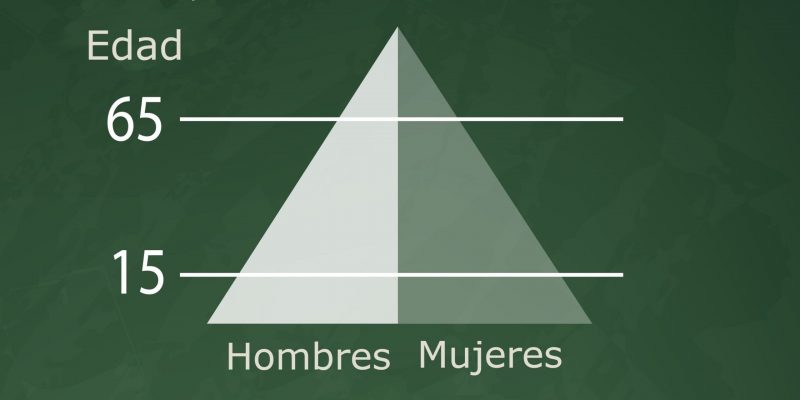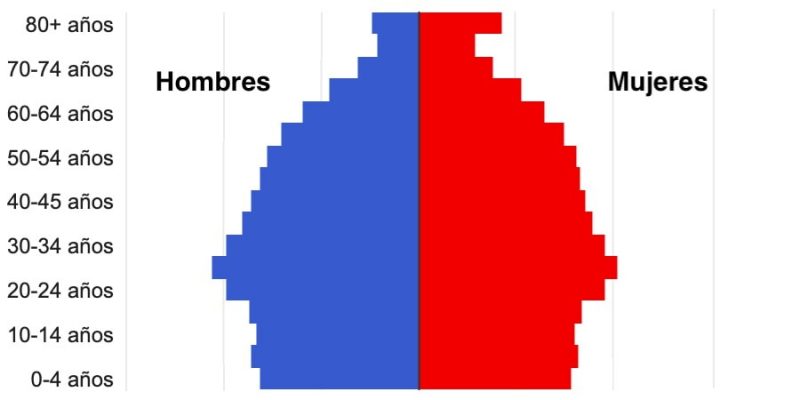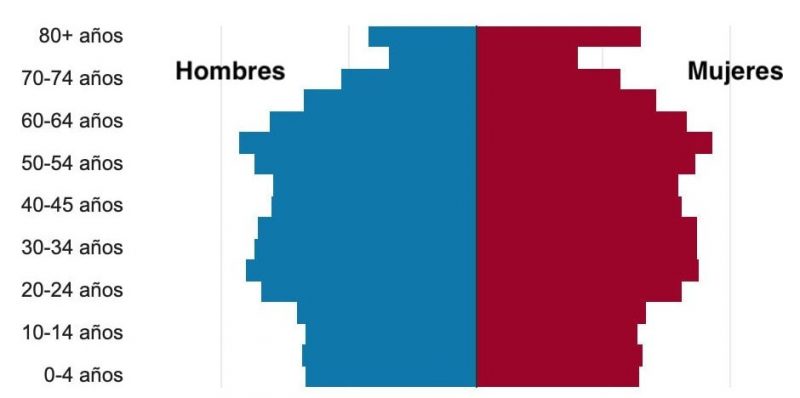The progressive pyramid and the regressive pyramid are types of population pyramids that graphically indicate the age and sex of a country’s population at a given time.
The pyramids are built based on two indices: the birth rate and the death rate, which refer to the type of economy, social and cultural level that a country has.
To build a pyramid, take the data, usually obtained from population censuses, and are reflected in bars arranged horizontally that symbolize the number of people for each age range (children at the base and adults at the tip). The data for the female population is plotted on the right side of the axis and the left for the male population.
Types of population pyramids
- Progressive pyramid

It is a type of pyramid with a broad base. Due to a high birth rate, they are countries with a primarily young population. Mortality levels occur progressively, and life expectancy is not high.
This pyramid is characteristic of underdeveloped countries—for example, Haiti and Mozambique.
- Stationary pyramid

It is an intermediate pyramid representing developing countries between the progressive and regressive levels. There is natality control and a higher life expectancy in these pyramids than in countries with a progressive pyramid.
In these countries, there is a similar number of young people and older adults—for example, Turkey and Chile.
- Regressive pyramid

It is a type of pyramid representing societies with meager death and birth rates. They usually establish policies for receiving immigrants or facilities for people with large families.
This pyramid is usually observed in developed countries—for example, Canada and Japan.
Examples of countries with a progressive pyramid
- Bolivia
- Angola
- Botswana
- Algeria
- Ethiopia
- Cameroon
- Nigeria
- Niger
- Togo
- Samoa
Examples of countries with a stationary pyramid
- Uruguay
- Peru
- Brazil
- Mexico
- Argentina
- South Africa
- India
- Thailand
- Colombia
- Sri Lanka
Examples of countries with a regressive pyramid
- Spain
- New Zealand
- Denmark
- Ireland
- Australia
- Hong Kong
- Taiwan
- Italy
- Germany
- U.S
